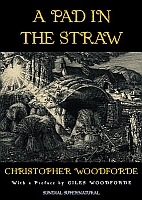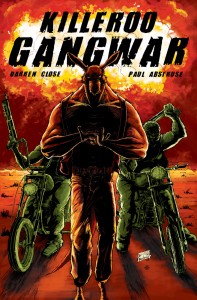DISCLAIMER: Thirteen O’Clock is managed by Alan Baxter, Felicity Dowker and Andrew McKiernan as Contributing Editors. While the Contributing Editors’ roles at Thirteen O’Clock are editorial and critique, all three are primarily writers. It is inevitable that their own work will form part of the Australian and international dark fiction publications which are Thirteen O’Clock’s focus, and as such it is also inevitable that their work will be reviewed at Thirteen O’Clock (to prohibit this would not only be unfortunate for Baxter, Dowker and McKiernan themselves, but for their hardworking editors and publishers).
Thirteen O’Clock will always have a third party contributor review the Contributing Editors’ work. Such reviews will be unedited (aside from standard corrections to typos and grammar), posted in full (be they negative or positive), and will always be accompanied by full disclosure of Baxter, Dowker and McKiernan’s place at Thirteen O’Clock. At no point will Baxter, Dowker or McKiernan review their own work.
 Bread and Circuses by Felicity Dowker.
Bread and Circuses by Felicity Dowker.
Ticonderoga Publications June 2012, ISBN 978-1-921857-08-9 (Paperback)
I’ve always maintained that horror is one of the most powerful emotions us human beings can experience, but when combined with love, hate and revenge, as is the case with many of the tales in Felicity Dowker’s collection Bread & Circuses, horror can also reveal our souls.
Bread & Circuses is rich with themes, motifs and mythology and of course Dowker’s lyrical prose. Having only ever read one of her short stories before (and I won’t be making that mistake again), I went into the collection completely blind – and I’m glad I did because the journey is one I won’t forget anytime soon.
One of the major themes in Dowker’s collection – and she freely admits this fact many times after each tale – is revenge. The characters in her stories are either seeking it or succumbing to it, sometimes in very real or fantastical situations. But I think underneath all the revenge there is an equally strong element of love too.
The title story “Bread & Circuses”, is a zombie tale about two women forced to live in a cemetery commune. To survive, members of the commune are rounded up to take on the zombies in a battle royale. Inevitably this couple is torn apart by a wave of violence and the reader can’t help but feel their pain, but love wins out in the end, in a gruesome, yet touching way.
“Jesse’s Gift” is another tale with love and friendship at its core. Girl meets boy; boy and girl meet demonic ice-cream man. Again there’s a finely-tuned interplay between dark and light, love and despair and Dowker uses horror to expose all our other traits with incredible skill. In fact her willingness to talk about her past in each of the afterwords only serves to heighten the impact intended with each story.
Dowker also reveals a lot about herself in her stories and even uses her own personal memories as inspiration. There are several tales revolving around a child that has either been subjected to physical violence or witnessed it. Dowker describes it with considerable courage and heart and still manages to craft unforgettable stories with “Us, After the House Came Back”, being one of the stand outs.
The power of Dowker’s writing shines in “Berries and Incense”, a wonderful dark fantasy piece which flows like a slow-burning hallucination. Animals associated with the dark arts are given human qualities and we see that they too can fall in love, suffer and die.
Other favourites were the deliciously dark “Phantasy Moste Grotesk” and its companion tale “The Blind Man”. Both tales would make the likes of Clive Barker proud and again the themes of revenge, love and their dark sides are on display.
I could say much more, but Bread & Circuses speaks for itself. Dowker was named Best New Talent at the 2009 Ditmar Awards and rightly so. She has a striking imagination and is not afraid to exploit human emotions through horror. Put simply, we need more writers like her.
Do yourself a favour and get a copy of Bread & Circuses now.
- review by Greg Chapman



![blood-stones-web[2]](/wp_content/uploads/2012/07/blood_stones_web2_200x300.jpg)
